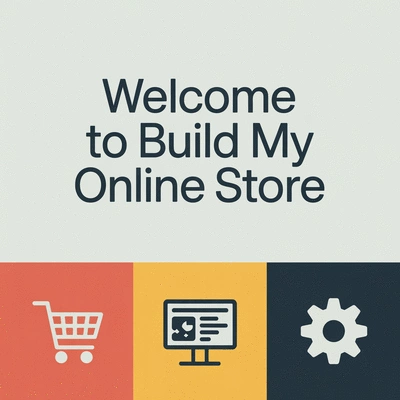Have you ever felt overwhelmed by the technical nuances of creating a successful e-commerce website? You're not alone. Many entrepreneurs share this struggle, but understanding the essentials can pave your path to success. Let’s explore the critical components that make your online store both fast and secure.
What You Will Learn
- The importance of website speed in reducing cart abandonment and enhancing user experience.
- Key security measures, including SSL certificates and regular software updates, to protect customer data.
- Techniques for optimizing website performance, such as image compression and efficient coding practices.
- How to build customer trust through consistent security protocols and user-friendly design.
- The significance of ongoing website maintenance for adapting to evolving technologies and security threats.
Key Elements for a Fast & Secure E-Commerce Website
Understanding the critical components for building a high-performing and protected online store.
What Makes an E-Commerce Website Fast?
- ✓ Image Optimization
- ✓ Code Efficiency
- ✓ Use of CDNs
Importance of Security in E-Commerce
- ✓ Customer Trust
- ✓ Legal Compliance
- ✓ Competitive Edge
Overview of Security Protocols
- ✓ SSL Certificates
- ✓ Regular Software Updates
- ✓ Firewalls & Antivirus
Key Maintenance Tasks
- ✓ Update Plugins & Platforms
- ✓ Conduct Performance Audits
- ✓ Review Security Measures
- ✓ Analyze User Feedback
Essential Steps & Best Practices
- ✓ Choose Right Platform
- ✓ Optimize for Speed
- ✓ Robust Security
- ✓ Effective SEO
- ✓ User Experience Focus
Popular Payment Gateways
- ✓ PayPal
- ✓ Stripe
- ✓ Square
- ✓ Afterpay/Zip Pay (AU)
Understanding the Key Components of a Fast and Secure E-Commerce Website
When embarking on your e-commerce journey, understanding the key components of a fast and secure website is crucial. The speed and security of your online store can significantly impact user experience, conversion rates, and overall business success. In this section, I’ll break down what makes an e-commerce website fast and secure, and why these elements are vital for your success.
Many Australian businesses often overlook these aspects, leading to missed opportunities. By ensuring that your website performs well and is secure, you can foster trust with your customers, encouraging them to complete their purchases and return for future visits!
Defining E-Commerce Website Performance: Speed and Security
To define e-commerce website performance, we need to focus on two key aspects: speed and security. A fast website means that your customers can browse through your offerings quickly and without frustration. On the other hand, a secure website protects sensitive customer data, ensuring safe transactions. Together, these factors enhance user experience and boost your credibility in the crowded online marketplace.
- Speed: Fast loading times prevent potential customers from abandoning their shopping carts.
- Security: A secure site safeguards customer information, making them feel safe while buying.
- Trust: High performance in both areas builds trust, encouraging repeat business.
In the competitive Australian e-commerce landscape, improving speed and security can set your business apart from others. Remember, every second counts! A minor delay can lead to lost sales.
What Makes an E-Commerce Website Fast?
Several factors contribute to the speed of your e-commerce website. Here’s what you should focus on:
- Image Optimization: Ensure images are properly compressed and sized for the web.
- Code Efficiency: Use clean and efficient code to reduce load times.
- Use of CDNs: A Content Delivery Network can help distribute content globally, speeding up access for users.
By addressing these areas, you can significantly improve your website's performance. As we move forward, I’ll share more about how to optimize these elements effectively.
The Importance of Security in E-Commerce
Security is non-negotiable in e-commerce. With increasing cyber threats, customers are more aware of how their data is used. A breach can not only lead to financial losses but also damage your reputation. Implementing robust security measures is essential to keep your customer information safe and maintain their trust. For detailed guidance on protecting consumer data, the FTC provides valuable insights into privacy and data security updates, emphasizing the importance of a comprehensive security strategy.
Here are a few key reasons why security should be a priority:
- Customer Trust: A secure site leads to increased customer confidence in your brand.
- Legal Compliance: Many countries require businesses to adhere to data protection regulations.
- Competitive Edge: Security features can be a unique selling point that attracts customers.
Overview of Security Protocols for E-Commerce Sites
To protect your e-commerce website, it’s vital to implement specific security protocols. Here’s a quick overview:
- SSL Certificates: These encrypt customer data during transactions.
- Regular Software Updates: Keep all platforms and plugins updated to patch vulnerabilities.
- Firewalls and Antivirus Software: These protect against unauthorized access and malware.
Investing in these security measures not only protects your customers but also enhances your business's reputation. For a deeper understanding of information security, the NIST offers comprehensive special publications on cybersecurity. In my experience with Build My Online Store, I’ve witnessed firsthand how prioritizing security leads to happier, more loyal customers! Additionally, you can explore more about e-commerce security best practices to further fortify your online store.
Pro Tip
Did you know? Regularly testing your website's speed can reveal hidden issues that may be affecting user experience. Use tools like Google PageSpeed Insights or GTmetrix to monitor performance and identify areas for improvement. A faster website not only enhances customer satisfaction but can also boost your search engine rankings!
Frequently Asked Questions (FAQs)
Wrapping Up Your E-Commerce Journey
As we wrap up this extensive guide on building a fast and secure e-commerce website, I want to emphasize a few key takeaways that can set you on the right path. Remember, the journey doesn’t end with just launching your site! It’s a continuous process that requires dedication and strategy.
Here are the essential steps and best practices we’ve discussed:
- Choose the right platform tailored to your business needs.
- Implement speed optimization techniques to enhance user experience.
- Ensure robust security measures to protect customer data.
- Utilize effective SEO strategies for better visibility.
- Focus on user experience to build trust with your customers.
With these steps, you'll be well-equipped to create a thriving online store that not only attracts visitors but also converts them into loyal customers. This commitment to excellence will pay off in the long run!
Key Takeaways for Building a Fast and Secure E-Commerce Website
Summarizing Essential Steps and Best Practices
In summary, building a successful e-commerce website involves several critical elements. From selecting the ideal platform to implementing security protocols, each step plays a vital role in your overall success. In my experience, maintaining a focus on speed and security will not only improve user satisfaction but also enhance your credibility in the competitive online market.
Regularly revisiting these practices ensures that your store evolves with changing technologies and customer expectations. Don’t forget, as an owner, your ongoing involvement is essential for sustaining growth!
Understanding the Long-Term Commitment to Maintenance
Creating your online store is just the beginning! A long-term commitment to website maintenance is crucial for continued success. Regular updates, monitoring website performance, and ensuring security measures remain effective are all part of the process.
Here are a few maintenance tasks to stay on top of:
- Update plugins and platforms regularly to avoid vulnerabilities.
- Conduct performance audits to identify potential speed issues.
- Review security measures to safeguard customer information.
- Analyze user feedback to improve functionality and experience.
By committing to these ongoing tasks, you position your business for success in the ever-evolving e-commerce landscape.
Getting Started with Your E-Commerce Website Today
Resources for Further Learning and Support
If you’re ready to dive deeper into the world of e-commerce, I highly recommend exploring resources dedicated to ongoing education. Platforms like Build My Online Store offer a wealth of knowledge through tutorials, expert insights, and community support to help Australian businesses thrive online.
Additionally, consider joining online forums or local business groups where you can share experiences and learn from others who are on a similar journey!
Call to Action: Begin Your E-Commerce Journey with Confidence
The time to start your e-commerce journey is now! With the right tools, strategies, and a commitment to learning, you can create a successful online store that resonates with your target audience. Don’t hesitate to take the plunge and implement the strategies we’ve discussed.
Remember, every big achievement starts with a single step—so let’s get started!
Exploring Payment Gateways and Mobile Payment Solutions
Finally, as you build your e-commerce site, don’t overlook the importance of payment gateways and mobile payment solutions. They are essential for providing a seamless transaction experience for your customers.
Some popular options include:
- PayPal for its widespread acceptance and ease of use.
- Stripe for its robust API and flexibility.
- Square for integrating both online and physical sales.
- Local solutions like Afterpay or Zip Pay for Australian customers.
Choosing the right payment gateway not only enhances user experience but also helps in building trust, ultimately leading to higher conversion rates. Make sure to consider the fees, features, and customer support when selecting a payment solution for your store!
Recap of Key Points
Here is a quick recap of the important points discussed in the article:
- Focus on website speed to prevent cart abandonment and enhance user experience.
- Implement robust security measures to safeguard customer data and build trust.
- Optimize images, use clean code, and consider CDNs to improve website performance.
- Regularly update software and security protocols to maintain a safe online environment.
- Utilize effective SEO strategies to increase visibility and attract more customers.









